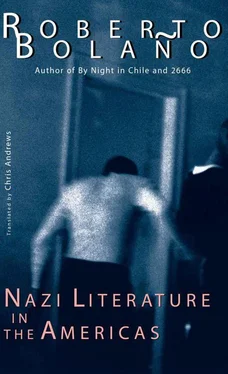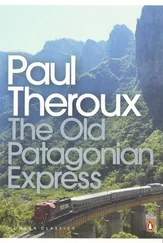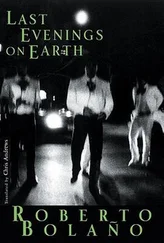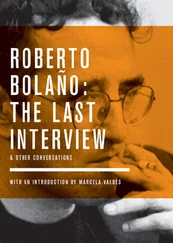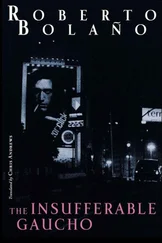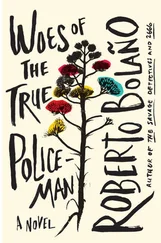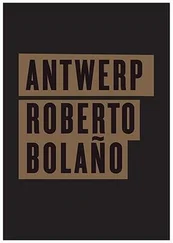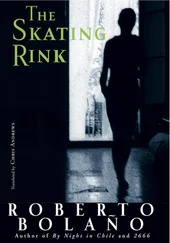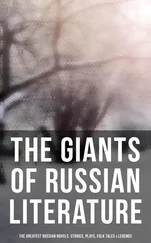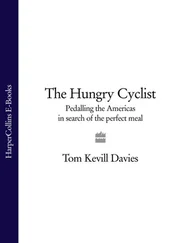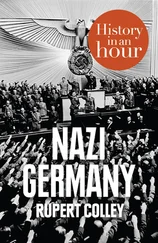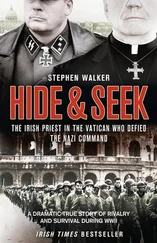He was to publish three more novels: Youthful Ardor , a look back to the Argentina of 1940; Pedrito Saldaña the Patagonian , a story of adventures in the south, a cross between Stevenson and Conrad; and Luminous Obscurity , a novel about order and disorder, justice and injustice, God and the Void.
In 1975, he gave up literature once again in favor of politics. He served the Peronist and military governments with equal loyalty. In 1985, after the death of his elder brother, he took over the running of the family businesses, a task he delegated to his nephews and his son in 1989, in order to work on a novel, which he did not finish. This last work, Sinking Islands , was published in a critical edition prepared by Edelmiro Carozzone, the son of his mother’s secretary. Fifty pages. Conversations among indistinct characters and chaotic descriptions of an endless welter of rivers and seas.
Berlin 1928–Buenos Aires 1976
Luz Mendiluce was a lively pretty child, a pensive plump adolescent, and a hapless alcoholic adult. That said, of all the writers in her family, she was the most talented.
Throughout her life she treasured the famous photo of her baby self in Hitler’s arms. Set in a richly worked silver frame, it had pride of place in each of her successive living rooms, along with portraits by Argentinean painters, showing her as a child or a teenager, generally accompanied by her mother. Some of those paintings were very fine works of art, yet had a fire broken out in her house, had there been time to save only one thing, it is conceivable that she would have left them to burn and chosen the photograph, even over her own unpublished manuscripts.
She had various stories for the guests who inquired about that remarkable snapshot. Sometimes she simply said that the baby was an orphan: the photo had been taken at an orphanage, during one of the visits that politicians frequently make to such institutions in a bid for votes and publicity. On other occasions she explained that it was one of Hitler’s nieces, a heroic and unfortunate girl, who had died in combat at the age of seventeen, defending Berlin from the Communist hordes. And sometimes she frankly admitted that it was her: Yes, she had been dandled by the Führer. In dreams, she could still feel his strong arms and his warm breath on the top of her head. She said it had probably been one of the happiest moments of her life. And perhaps she was right.
Her talent bloomed early; she published a first collection of poems when she was still seventeen. By the age of eighteen, with three books to her name, she was living more or less on her own, and had decided to marry the Argentinean poet Julio César Lacouture. The marriage proceeded with the family’s blessing, in spite of her fiancé’s evident deficiencies. Lacouture was young, refined and stylish, as well as remarkably handsome, but penniless and a mediocre poet. For their honeymoon the couple went to the United States and Mexico, and in Mexico City Luz Mendiluce gave a poetry reading. The problems had already begun. Lacouture was a jealous husband. He took revenge by cheating on his wife. One night in Acapulco, Luz went out to find him. Lacouture was at the house of the novelist Pedro de Medina. During the day, a barbecue had been held there in honor of the Argentinean poetess; by night, the house had been transformed into a brothel, in honor of her husband. Luz found Lacouture with two whores. At first she remained calm. She drank a couple of tequilas in the library with Pedro de Medina and the social-realist poet Augusto Zamora, both of whom tried to calm her down. They talked about Baudelaire, Mallarmé, Claudel and Soviet poetry, Paul Valéry and Sor Juana Inés de la Cruz. Sor Juana was the straw that broke the camel’s back; Luz exploded. She grabbed the first thing she could find and returned to the bedroom in search of her husband. Lacouture was attempting to get dressed, in an advanced state of inebriation. The scantily clad whores looked on from a corner of the room. Unable to restrain herself, Luz struck her husband on the head with a bronze sculpture of Pallas Athena. Lacouture had to be hospitalized for fifteen days with a severe concussion. They returned to Argentina together but separated after four months.
The failure of her marriage plunged Luz into despair. She took to drinking in dives and having affairs with some of the most unsavory individuals in Buenos Aires. Her well-known poem “I Was Happy with Hitler,” misunderstood by the Right and the Left alike, dates from this period. Her mother tried to send her to Europe, but Luz refused. At the time she weighed more than two hundred pounds (she was only five foot two inches tall) and was drinking a bottle of whisky a day.
In 1953, the year in which Stalin and Dylan Thomas died, she published the collection Tangos of Buenos Aires , which, as well as a revised version of “I Was Happy with Hitler,” contained some of her finest poems: “Stalin,” a chaotic fable set among bottles of vodka and incomprehensible shrieks; “Self Portrait,” one of the cruelest poems written in Argentina during the fifties, which is no mean claim; “Luz Mendiluce and Love,” in the same vein as her self-portrait, but with doses of irony and black humor, which make it somewhat less grueling; and “Apocalypse at Fifty,” a promise to kill herself when she reached that age, which those who knew her regarded as optimistic: given her lifestyle, Luz Mendiluce would be lucky to reach the age of thirty.
Little by little there gathered about her a clique of writers too peculiar for her mother’s taste and too radical for her brother. American Letters became an essential reference point for Nazis and the embittered, for alcoholics and the sexually or economically marginal. Luz Mendiluce assumed the roles of mother figure and high priestess of a new Argentinean poetry, which a fearful literary community would thenceforth attempt to suppress.
In 1958 she fell in love again. This time the object of her affections was a twenty-five-year-old painter. He was blond, blue-eyed and disarmingly stupid. The relationship lasted until 1960, when the painter went to Paris on a fellowship that Luz had obtained for him, through the good offices of her brother Juan. This new disappointment fuelled the elaboration of another major poem, “Argentinean Painting,” in which Luz revisited her often stormy relationships with Argentinean painters in her various capacities — as collector, wife and (from an early age) model.
In 1961, having obtained the annulment of her first marriage, Luz took as her wedded husband the poet Mauricio Cáceres, a regular contributor to American Letters , and an exponent of what he himself called the “neo-gaucho” style. Having learned her lesson, this time Luz decided to become a model helpmeet and homemaker: she let her husband take control of American Letters (which led to numerous disputes with Juan Mendiluce, who accused Cáceres of appropriating funds), gave up writing and dedicated herself body and soul to her wifely duties. With Cáceres in charge of the magazine, the Nazis, the embittered and the sociopaths unanimously espoused the neo-gaucho style. Success went to Cáceres’ head. At one point he came to believe that he could do without Luz and the Mendiluce clan. He attacked Juan and Edelmira when he saw fit. He even allowed himself the pleasure of belittling his wife. New muses soon appeared on the scene: young female converts to the manly cause of neo-gaucho poetry who succeeded in catching the master’s eye. Until one day Luz, who had seemed completely unaware of her husband’s activities, suddenly exploded once again. The incident was extensively covered in the crime pages and gossip columns of the Buenos Aires newspapers. Cáceres and an editor from American Letters ended up in the hospital with bullet wounds. While the editor’s injuries were minor, Cáceres was not discharged for a month and a half. Luz did not fare much better. Having shot her husband and her husband’s friend, she shut herself in the bathroom and swallowed the contents of the medicine chest. This time, there was nothing for it; she had to leave for Europe.
Читать дальше
